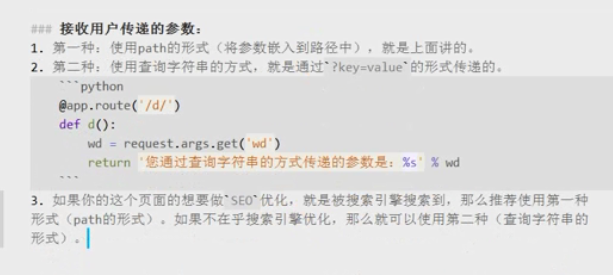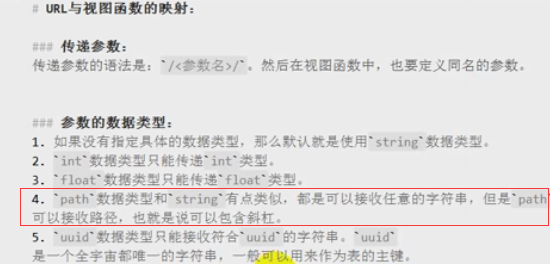from flask import Flask,request app = Flask(__name__) @app.route("/") def index(): return "hello world" #url中带参数怎么传递 @app.route('/article/<id>/') def article(id): return "article:{}".format(id) #url中限制整数 @app.route('/author/<int:id>/') def detail_author(id): return '作者详情:{}'.format(id) #url中限制浮点数 @app.route('/price/<float:id>') def price(id): return 'salary:{}'.format(id) #url中用path可以匹配分隔符 @app.route('/book/<path:id>') def detail_book(id): return '书籍详情页:{}'.format(id)
#uuid url的用法 @app.route('/user/<uuid:user_id>') def user_detail(user_id): return '用户个人详情页:%s'%user_id import uuid print(uuid.uuid1()) #any可以匹配多个 @app.route("/<any(blog,user):url_path>/<int:id>/") def detail(url_path,id): if url_path == "blog": return "博客详情页:%s"%id else: return '用户详情页:%s'%id #通过?的方式来传递参数 @app.route('/d/') def search(): wd = request.args.get('wd') return "根据关键字来查询:%s"%wd
#如果是多参数来请求的话
 这个后台参数该怎么接受
这个后台参数该怎么接受
@app.route('/d/')
def search():
wd = request.args.get('wd')
#这里再接受一个参数
ie = request.ags.get('ie')
return "根据关键字来查询:%s-%s"%(wd,ie)
if __name__ == '__main__': app.run(debug=True)


